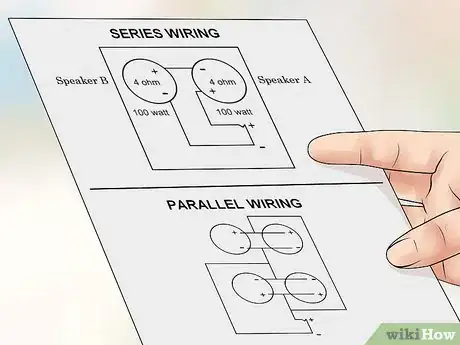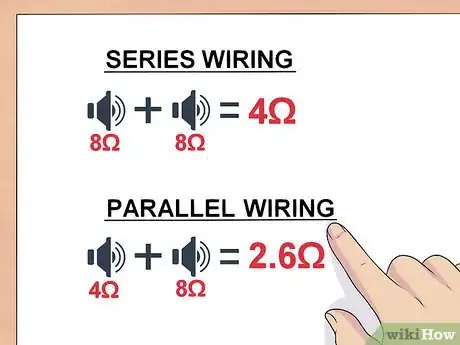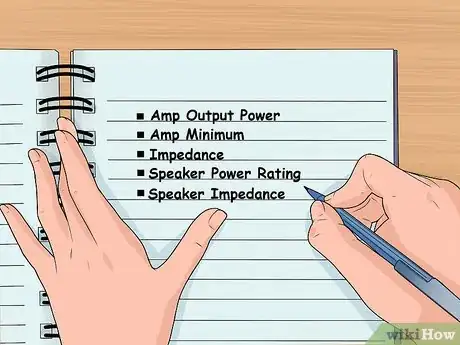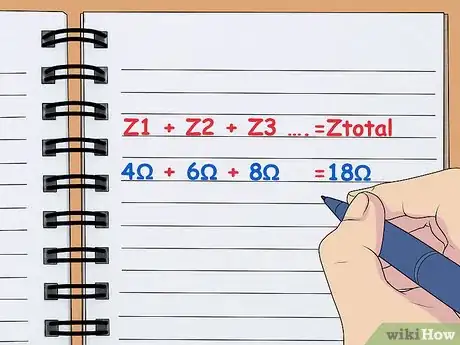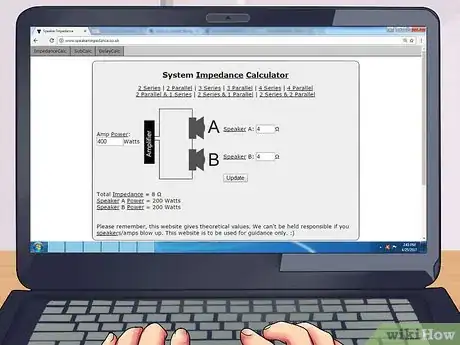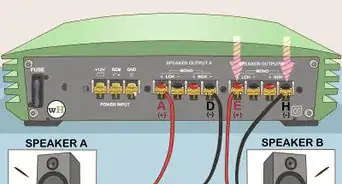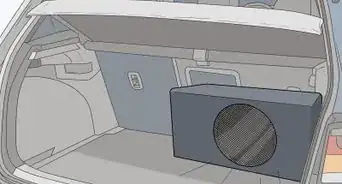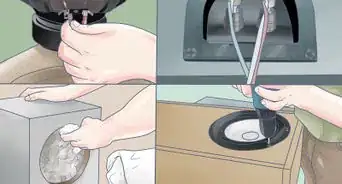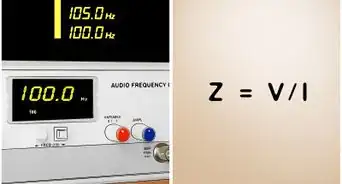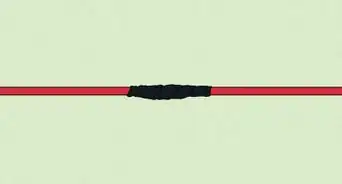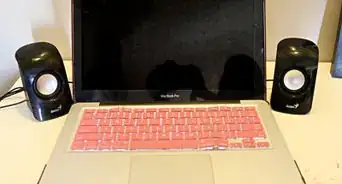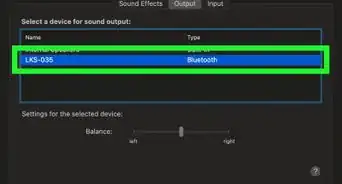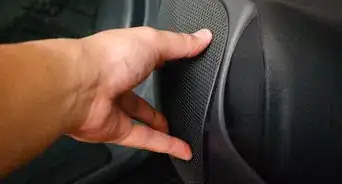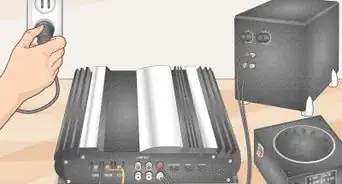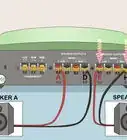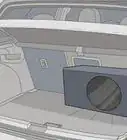This article was co-authored by wikiHow Staff. Our trained team of editors and researchers validate articles for accuracy and comprehensiveness. wikiHow's Content Management Team carefully monitors the work from our editorial staff to ensure that each article is backed by trusted research and meets our high quality standards.
This article has been viewed 43,594 times.
Learn more...
An aftermarket sound system can go a long way in adding quality to your listening experience, but there are a lot of pieces that have to be wired correctly. A bad wiring job can land you with blown sub-woofers, a burnt up amp, or in some cases even catch your car on fire. If you plan to install your own sub-woofers, make sure that you understand the basic circuitry that goes into the job.
Steps
Basic Wiring Concepts
-
1Know the difference between wiring in series and in parallel. There are two ways to connect your wires, and it matters which way you choose. You will want to wire in series whenever you would like to raise the impedance of your system and wire in parallel whenever you would like to lower the impedance of your system.
- Wiring in series means that you start by connecting the positive output terminal of your amp to the positive wire on speaker A. Then you connect the negative wire of speaker A to the positive wire of speaker B. Finally, the circuit is complete when you connect the negative wire of speaker B to the negative output terminal of your amp. This can be done for any number of speakers, so long as you follow the pattern (amp+ +speaker- +speaker- +speaker- +speaker- ……… +speaker- -amp).[1]
- Wiring in parallel means that you will connect the positive output terminal of your amp to the positive wire of all speakers in your system. Then you would connect the negative output terminal of your amp to the negative wire of all speakers.[2]
-
2Understand what effect different wiring has on your power output. These two wiring schemes have dramatically different effects on the impedance and power output in your system.
- Wiring in series increases the impedance of your system. This decreases the amount of power received by each speaker. Each speaker added will also raise the impedance of the system.[3]
- Wiring in parallel decreases the impedance of your system. This means more power will go to each speaker because adding speakers to the circuit will lower the impedance of the system.
Advertisement -
3Be able to identify the parts of your system and their functions. The stereo head serves as the control panel for the system and sends signals to the amp. The amplifier, or amp, magnifies the signal from the stereo head and sends it to the speakers, which produce sound. The sub-woofers are the speakers responsible for producing sounds at a very low frequency.[4]
Wiring Diagram
-
1Locate the specification labels for your system. Your amp should have a label near the speaker output jack that indicates the output power (measured in Watts) and the minimum impedance (measured in Ohms). Your sub-woofers should also be labeled with an impedance value (in Ohms) and a value indicating the maximum power input that they can handle (in Watts).[5]
-
2Write down these values. You should have at least four different values written down.
- Amp Output Power
- Amp Minimum Impedance
- Speaker Power Rating
- Speaker Impedance
-
3Calculate the total impedance of all of your speakers. To do this you should add together the speaker impedance number for all of your speakers. You want the impedance to be at least equal to the minimum impedance value of your amp on each channel, but not to exceed 16 Ohms unless your amp is specifically rated for impedance values above 16 Ohms.[6]
- The formula for finding total impedance for speakers wired in series is Z1 + Z2 + Z3 …. = Ztotal. Where Z is the impedance of a given speaker.
- For example, if you have three speakers with impedance values of 4 Ohms, 6 Ohms, and 8 Ohms your total impedance wired in series would be 18 Ohms (4+6+8=18).
- The formula for finding total impedance of speakers wired in parallel is a little trickier. It is (Z1 x Z2 x Z3…) / (Z1 + Z2 + Z3…) =Ztotal.
- So say you have two speakers with impedances of 6 Ohms and 8 Ohms. This time it would look like this: 1) Multiply the values. 6 x 8 = 48 Ohms 2) Add the values. 6 + 8 = 14 Ohms 3) Divide the top by the bottom to find your total impedance. 48/14 = 3.43 Ohms (rounded)
- You can also use an impedance calculator such as this one http://www.speakerimpedance.co.uk/.
-
4Calculate the power each speaker will receive. This will be based upon the total impedance and the power output of your amplifier. You can use variations of Ohm’s Law to do the calculations yourself[7] or you can refer to the online calculator above.
Wiring the System
-
1Unplug your battery terminals. You do not want the system to have live power while you are making your connections. Turn the vehicle off and remove the cables from your battery.
-
2Wire the amp to your first speaker. Connect the positive output wire to the positive wire of your first speaker. This may mean splicing the two wires together, but more often the amp is made to have the wire of the speaker inserted into an output jack. This step will be the same regardless of whether you are wiring in series or parallel. [8]
-
3Connect the remaining speakers. Each of the speakers that you are wiring in series will be connected to each other. This can be done by splicing the wires together. Each of the speakers that you are wiring in parallel will be connected to the output jack on the amp. [9]
- You can wire some speakers in series and some in parallel within the same system to reach the desired impedance/power values.[10]
-
4Close the circuit. This will be done by making the final connection and creating a “loop.” Connect the negative wire of the last speaker in any series, and the negative wires of all speakers in parallel, to the negative port of the output jack on the amp.[11]
-
5Connect your battery cable. Now you can connect the ground cable on your battery and restore power to the vehicle.
-
6Turn up the music. This step is what it’s all about. Enjoy your music, and make sure that everyone else does to!
Warnings
- Overloading your amp can lead to blowing the amp and possibly even fire.⧼thumbs_response⧽
- Do not wire your system with the battery hooked up.⧼thumbs_response⧽
Thinks You’ll Need
- Pen
- Paper
- Calculator or Online Calculator
- Wire Strippers
- Wire Nuts
References
- ↑ http://cie-wc.edu/Series_Parallel_9_14.pdf
- ↑ http://cie-wc.edu/Series_Parallel_9_14.pdf
- ↑ http://www.gollihurmusic.com/faq/31-OHMS_AND_IMPEDANCE_FROM_THE_OUTPUT_SPEAKER_PERSPECTIVE.html
- ↑ http://www.gollihurmusic.com/faq/31-OHMS_AND_IMPEDANCE_FROM_THE_OUTPUT_SPEAKER_PERSPECTIVE.html
- ↑ http://www.gollihurmusic.com/faq/31-OHMS_AND_IMPEDANCE_FROM_THE_OUTPUT_SPEAKER_PERSPECTIVE.html
- ↑ http://cie-wc.edu/Series_Parallel_9_14.pdf
- ↑ http://cie-wc.edu/Series_Parallel_9_14.pdf
- ↑ http://cie-wc.edu/Series_Parallel_9_14.pdf
- ↑ http://cie-wc.edu/Series_Parallel_9_14.pdf
About This Article
To wire your own subwoofers, start by deciding whether to wire in series, which will decrease your power output, or wire in parallel, which will increase power to each speaker. Additionally, make a wiring diagram and calculate the power each speaker will receive. When you’re ready, turn off your car and unplug your battery terminals, since you don’t want live power as you make your connections. Then, wire the amp to the first speaker and connect the remaining speakers. Afterwards, close the circuit by connecting the negative wires to the negative port on the output jack. Finish by reconnecting your battery and turning on your car to test your new system! To learn more, including how to calculate the total impedance of all your speakers, read on!
